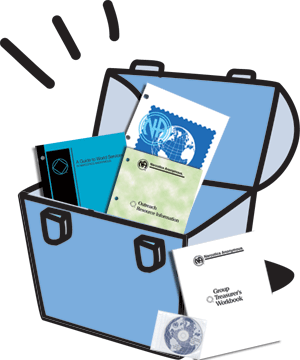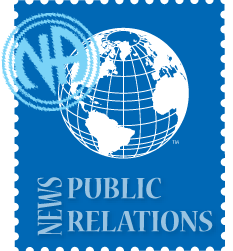 |
|
|
|
Service Youth IPs are available for review and input The new youth IPs were released for review and input 1 March. The drafts include a new pamphlet titled “By Young Addicts, For Young Addicts” (which would replace the existing Youth and Recovery IP) and a piece geared toward parents of young addicts. There’s still plenty of time to submit input for this project before the review period ends 31 May. You can obtain a review copy and submit input online by visiting our website: http://www.na.org/conference/youth/, or you can request a paper copy by fax at 818.700.0700, by email at worldboard@na.org, or by postal mail at NA World Services; PO Box 9999; Van Nuys, CA 91409. We know the youth IP drafts could benefit from a broader range of experience, and we’re eager to hear from members about what would help fill these gaps. As we’ve previously reported, targeting literature to younger addicts means that these pieces have been created so they speak directly to this population. The new IPs will look and sound different. As your board, we had our own challenges reviewing these pieces. Since the material wasn’t intended to speak to us, we had to focus our conversations on whether or not it could be helpful to younger members in NA, and if it was consistent with NA’s principles. We know that making NA’s message more viable to a widely diverse population means that not everything will be in a voice that each of us can relate to. We’ve discussed the challenge of asking members to review pieces not meant to speak to most of us doing the reviewing. We know that asking, “Do I relate to this?” is not the most useful way to approach these IPs. What will be most useful is to think about whether the material is likely to help younger members coming to NA. Some service committees are organizing workshops to review the IPs, and some younger NA members are getting together to read and input this material. We also know these new IPs will benefit from the ideas and experiences of members in our worldwide fellowship, and we appreciate your efforts to provide feedback on these pieces. For those who aren’t familiar with the background of this project, it may be helpful to know that the youth IPs came about partly as a result of our fellowshipwide discussions. Our discussions about a group’s Atmosphere of Recovery identified young people as missing from NA meetings or missing out on NA’s message. Our current discussions about Who Is Missing from Our Meetings continue to identify young people as a key group. We also receive ongoing requests from professionals for new literature geared toward young people, and targeted literature for youth was prioritized by the World Service Conference in 2006. Needless to say, there is a substantial need for new literature geared toward young addicts. Many of us were able to get clean without targeted literature, but we know that some potential NA members didn’t stay or that others could have experienced NA’s message more easily with targeted literature. We believe that expanding our literature and finding new ways to reach those who haven’t yet heard our message is crucial, not only to accomplishing our vision, but to fulfilling our primary purpose. We look forward to hearing from you as to how we can make these new IPs even more relevant to young addicts seeking recovery from addiction. Issue Discussion Topics A round of workshops on the Issue Discussion Topics has provided us with an impressive volume of fellowship input. Generally speaking, reactions to these topics have generated similar responses all around the world. Discussions have been lively and seem to give members fresh ideas and perspectives to take home. All of this positive energy will help as we shift the focus of these discussions to dig a bit deeper. As a fellowship, we’re beginning to connect the dots between our strengths and our challenges. With your help, we can continue that process in the upcoming round of discussions.
Taking
the Next Step
Building a service toolbox
What image does PR bring to mind? Professionals in suits? Advertising executives? For many of us, our first thought is not of NA members standing outside a meeting place; but the Public Relations Handbook preface reminds us that NA’s relationships with the public stem primarily from how we are observed as we interact at meetings and functions, as we conduct service activities, and even when we represent NA unconsciously in our everyday activities. This echoes the essay on Tradition Eleven in It Works: How & Why: “All our members play a part in our public relations, whether or not they’re involved in public information work.” (p. 206) With this in mind, we turn to Chapter Four of the PR Handbook, “Preparation and Training for Interacting with the Public.” We believe there is value in this chapter for all NA members, not just “PI/PR types,” because every service committee and member interacts with people outside our fellowship at some time. Hospitals and Institutions panel volunteers have relationships with institutional staff when they conduct H&I meetings and when they make presentations. Phoneline volunteers receive calls from concerned parents, friends, and healthcare professionals. Even a group’s trusted servants interact with meeting-location personnel, and the way a group maintains the meeting facility can impact the way NA as a whole is viewed. Chapter Four contains training materials and general practices we believe are important in any public interaction. Preparation and training can be vital in forming any relationship, whether with the pastor of a local church, the warden of a prison, or the minister of health for a country where NA is largely unknown. Strong relationships, as the Handbook stresses, are ongoing, flexible, trustworthy, and respectful, and benefit both parties involved. In preparing and training, we must ask some basic questions. With whom are we interacting, and what do we know about them? Different people or organizations have their own goals, histories, and world views, and we must consider these differences to know how to appropriately interact with them. What our audience knows about us is also an important consideration. For instance, how might any past experience they have had with NA affect our present interaction? Using information gathered from the above questions, we can prepare ourselves for how we will interact with the party in question. We want to create a dialogue, an exchange of ideas where we not only provide information about NA, but are also willing to listen to their needs, concerns, and what they have to offer us. We want to communicate effectively, so we should be mindful to use language that our audience understands (rather than NA slang, for example). We want to show the audience respect by dressing appropriately for the situation. Furthermore, taking all of this into account, we want to rehearse so that we are well prepared. Of course, a column in The NA Way is not nearly enough space to cover the entire fourth chapter, which includes much more detail about preparation and training, and many tips and ideas for giving presentations of all types. We invite you to read the PR Handbook for yourself. Remember, it’s free to download from www.na.org. Let us all remember: NA’s public relations is the business of each and every one of us! NA World Services public relations activities In January and March, we attended the Recovery Month Planning Partners meeting in Washington, DC, USA. This ongoing contact is maintained in the spirit of cooperation, and to serve as a community resource. At the January meeting, we had the opportunity to explain our traditions, particularly our principles of anonymity, to professionals who may refer potential members to us. NAWS was represented at the American Probation and Parole Association Conference in Atlanta, Georgia, USA, in February. We have exhibited there for three years, and find that the contact we have with these professionals fosters an increased understanding of NA for those who supervise current and potential NA members. Partnering with NA communities The San Diego (California, USA) Imperial Counties Region Public Information Subcommittee and NAWS are working together to carry our message of recovery at two events: the Guest House Institute/National Catholic Council on Alcoholism Winter Conference on Addictions, in January; and the National Association of Addiction Treatment Providers Annual Conference, to be held in May. Both events take place in San Diego. NA was actively pursued for the Guest House Conference, and the San Diego PI subcommittee moved quickly and efficiently to fill that need. Good job! The Colorado Region and the Pikes Peak Area stepped up to provide NA representation at the Winter Symposium on Addiction Disorders in Colorado Springs, Colorado, USA. Also, the Southern Nevada Region PI Subcommittee stands ready to represent NA at the 21st Annual California Association of Alcohol and Drug Educators Conference to be held in April in Primm Valley, Nevada, USA. Combining resources enables us to inform more professionals about NA, broadens the experience of local NA community service bodies, and connects local members with professionals who may refer potential members to NA. World Board update Common needs at the world convention We’ve received a number of requests from members for particular kinds of common needs events at WCNA in San Antonio. Because these requests have primarily come from young people and gay and lesbian members, we’re planning daily youth and gay/ lesbian workshops, and dances for each of those populations. We are also planning women’s and men’s workshops, workshops for Spanish-speaking members, and workshops that focus on aging and illness. At this point, we haven’t heard from Spanish-speaking members about what would best serve this population at the convention. There’s still time for input, and we’d love to hear what would be most useful for these members at the world convention. As your board, we’ve discussed the idea that incorporating common needs activities into the world convention schedule doesn’t mean holding just one workshop or event. It means a whole track of activities that would seek to enhance the experience of the convention and welcome these populations. These new approaches are a part of our efforts to respond to the fellowshipwide discussions about who is missing from our meetings and how we can better carry NA’s message to specific populations. For more information about these discussions, see the Issue Discussion Topic article in this issue. We’re looking forward to the convention in San Antonio and to experimenting with new ways of carrying NA’s message and welcoming members. Basic Text update The Basic Text workgroup is diligently reading fellowship input on the review draft of the Sixth Edition Basic Text and discussing what revisions to make. The review and input period ran from 1 September 2006 until 28 February 2007, and in that time we distributed more than 7,500 copies of the draft to fifty-three countries. The approval draft, which is the draft that will be voted on at the 2008 World Service Conference, will be published 1 September 2007, and it will also be available as an appendix to the Conference Agenda Report. Thank you to all who contributed to the project. |
| Contact NA World Services |
|
Return to Home Page |

